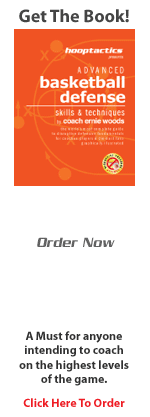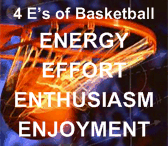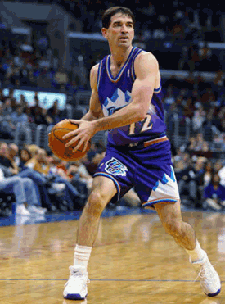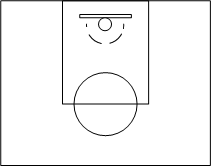Basketball Strategies – January 2012
HoopTactics Newsletter
The 4 E’s of Basketball
Sideline Out of Bounds Plays
Raising Your Level of Passing
Free Court Diagrams
Quick Tip: The 4 E’s of Basketball
Energy, Effort, Enthusiasm, and Enjoyment. Coaches must not only have to know what they are doing, but must also have an enthusiasm and enjoyment for doing it. To be successful, coaches must impart this energy to their team.
Coaching Tips: Disrupting Baseline Out of Bounds Plays
Coaches spend considerable amounts of practice time working on offensive baseline out of bounds plays, but spend little or no time on ways to defend them. As a result, too many easy baskets are given up during the course of the game on out of bounds plays simply because teams are not prepared to stop them.
If you analyze “Out of Bound” situations, they are unique in that it is the only time during the game of basketball where the defense actually has an advantage. Because of this numerical player advantage (5 on 4), it can be difficult for the offensive team to inbound the ball, and, as a result, numerous NCAA and NBA championships have been lost because teams were not able to make successful inbound passes in the final seconds of game.
Most coaches take it for granted that their basic half court defense applies to baseline out of bounds situations. However, this is not the case. Defending the ball when it is located out of bounds behind the defense is entirely different matter than defending the ball when it is out in front of the defense. In addition, in regular half court set offenses, defenders are mostly guarding shooters moving off screens away from the basket. On baseline out of bounds, the shooters are going directly to the basket. As a result, there is no room for error. If the defense makes an error on an out of bounds play it results in an easy basket. Learn More: Four effective ways to combat the baseline out of bounds plays.
Free Area – Click Here
Premium Members – Click Here
Player Tips: Raising Your Level of Passing.
What level of passer are you?
Level One. Throws the ball to an area just to get rid of it. Common among beginning players.
Level Two. Just throws the ball toward a teammate no matter if they are ready to receive it or not. This is why players and coaches get hit by the ball during practice when just standing around.
Level Three. Surgeon. Passes to a specific target (hand or finger). Leads receivers into good shots. Rarely throws the ball away.
Level Four. Magician. A rare individual that can create open shots for teammates. Makes no look passes. Never throws the ball away.
The ability to move the basketball and hit the open man is a characteristic found in all great players and teams. In order to perfect this ability to its utmost, players must utilize and master the fundamental principles of passing. To learn more – Click Here
Player Development: The Vital Importance of a good inbounds passer
It is not so easy to inbound ball. Most players and coaches take making an inbounds pass for granted. However, in making an inbounds pass, the passer is facing a five against four defensive advantage and only has five (5) seconds in which to locate a receiver and make a successful inbounds pass. In addition, to this numerical disadvantage, by rule the inbounder cannot move, except after a made shot. This provides the defense with the opportunity to jam or smother the passer very effectively. Also, on baseline out of bound situations, the backboard comes into play and becomes a real obstacle in which that the inbounds passer has to contend.
Many of championships have been lost because teams were not able to inbound ball at end of game. Players on all levels, including the NBA and WNBA, need to know and practice the fundamental skills and concepts required in making a successful inbound pass. In additional to the physical skills involved, good inbound passers must possess a strong commitment to team play since they are taken for granted and very rarely rewarded for the efforts. However, good inbounders are vital, and a team will not win a championship without one. To learn more – Premium Members Click Here
FREE Printable Court Diagrams
College/HS, NBA, International court formats. Choose from 36 different styles: Full court (12), half courts (18) and combinations (6 ). Click Here
Posted: January 6th, 2012 under Coaching Strategies | Defensive Strategies | Player Development.
Tags: Defense, Defensive Situations, Skills & Techniques







